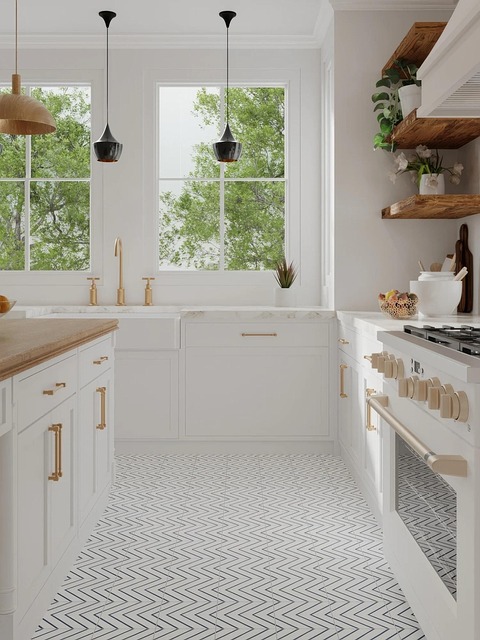Building a resilient home involves understanding local disaster risks and implementing specific safety features tailored to each region's unique natural hazards. This includes robust structural designs, accessible floor plans, impact-resistant windows, and strategic material choices like concrete and steel. Smart technology integration monitors environmental conditions in real-time, while an emergency plan outlines evacuation routes, meeting points, and essential supplies for all family members. These steps ensure peace of mind and enhance a home's ability to withstand severe weather events.
In an era where natural disasters are increasingly frequent and severe, building a resilient home is more important than ever. This comprehensive guide offers expert advice on protecting your sanctuary from the elements. From understanding regional disaster risks to integrating smart technology, each section equips homeowners with essential tools for constructing a fortress of safety. Discover the key principles of design, material choices, and emergency planning that will safeguard your family and property in the face of adversity.
- Understanding Your Region's Disaster Risks: A Foundation for Resilience
- Essential Design Principles for a Resilient Home Structure
- Choosing the Right Materials: Building a Strong First Line of Defense
- Smart Technology Integration: Enhancing Your Home's Preparedness
- Creating an Emergency Plan: Preparation and Safety Measures for Every Scenario
Understanding Your Region's Disaster Risks: A Foundation for Resilience

Understanding your region’s disaster risks is a crucial first step in building a resilient home. Different areas are prone to unique natural hazards, such as earthquakes, hurricanes, floods, or wildfires. By assessing these local risks, you can make informed decisions about the safety features and construction techniques best suited for your location.
For instance, if you live in an area frequently hit by strong winds and storms, investing in a resilient home construction that meets specific wind-load requirements becomes essential. Similarly, if you’re in a flood-prone region, raising your home’s foundation or installing water barriers can significantly enhance its resilience. Proactive understanding of these risks allows for better protection and peace of mind.
Essential Design Principles for a Resilient Home Structure

When designing or retrofitting a home for resilience against natural disasters, several key design principles must be considered. First, focus on structural integrity with robust framing and load-bearing walls that can withstand extreme weather events like hurricanes and earthquakes. Using high-quality materials and securing all components to local building codes ensures the home’s framework can protect occupants and precious belongings.
Secondly, prioritize accessibility and escape routes by designing clear, open floor plans that offer multiple exit points. Incorporate robust windows and doors made from impact-resistant glass and materials, providing safe passage even during severe storms. Additionally, installing a well-lit, easily navigable interior enhances safety, ensuring occupants can swiftly evacuate if needed. These design considerations collectively contribute to a resilient home construction capable of withstanding nature’s challenges.
Choosing the Right Materials: Building a Strong First Line of Defense

When constructing or retrofitting a home for resilience against natural disasters, choosing the right materials is paramount. Opting for robust and durable options like concrete, steel, and hurricane-rated windows can significantly enhance a home’s ability to withstand extreme weather events. These materials offer superior strength and flexibility, ensuring structural integrity during storms and earthquakes. For instance, concrete construction is known for its resilience against high winds, flying debris, and intense vibrations.
Additionally, incorporating smart design elements that align with resilient home construction principles is essential. This includes features like impact-resistant roofing, robust door frames, and proper drainage systems. Such measures not only protect the structure but also safeguard valuable belongings and ensure the safety of occupants during disasters. By selecting materials that can withstand extreme conditions, homeowners can create a sturdy first line of defense, offering peace of mind and enhancing overall preparedness.
Smart Technology Integration: Enhancing Your Home's Preparedness

In today’s digital era, smart technology integration plays a pivotal role in enhancing your home’s preparedness against natural disasters. Devices like smart sensors and automated systems can provide real-time data on environmental conditions such as temperature, humidity, and air quality, enabling proactive measures to ensure a resilient home construction. For instance, advanced smoke detectors linked to smart home hubs can alert residents and even notify emergency services promptly during a fire outbreak.
Similarly, smart flood sensors and water leakage detection systems can help prevent extensive damage by quickly identifying potential flooding issues. These technologies not only offer peace of mind but also facilitate timely interventions, crucial for mitigating the impact of natural disasters. By seamlessly integrating such innovations into your home’s infrastructure, you’re taking a significant step towards constructing a more resilient residence capable of withstanding adverse conditions.
Creating an Emergency Plan: Preparation and Safety Measures for Every Scenario

Creating an emergency plan is a vital step in preparing for natural disasters, ensuring your family’s safety and fostering a resilient home environment. The first aspect to consider is evaluating potential risks specific to your region. Whether it’s hurricanes, earthquakes, floods, or wildfires, understanding these hazards allows you to tailor your plan accordingly. For instance, in flood-prone areas, having a high-water mark marker inside your home can help you quickly assess water levels during a storm.
Once identified, develop a comprehensive strategy that includes meeting points, evacuation routes, and communication methods for every family member. A resilient home is equipped with essential supplies like a first aid kit, flashlights, non-perishable food, and clean water stored in easy-to-access locations. Regularly test your plan through drills to ensure everyone knows their role, making your home safer and better prepared for any scenario.
Protecting your home from natural disasters requires a multi-faceted approach. By understanding regional disaster risks, implementing robust design principles and smart technology integration, and crafting a comprehensive emergency plan, you can achieve a resilient home construction that ensures safety and peace of mind. Embrace these expert guidelines to fortify your sanctuary against the elements.
